45+ Patient Retention and Churn Rate Statistics
Here is our list of over 45 patient retention statistics detailing differences in generations, the benefits of patient retention, and the cost of having patients leave.

There is a 60-70% chance that an existing, established patient will continue visiting a healthcare provider for their next appointment1 This means that 30-40% of patients will switch providers and see a different doctor for their ongoing healthcare needs.
For new patients, there is only a 5-20% chance they will come for a second visit.1 When looking at dental practices specifically, dentists only retain an average of about 41% of patients who visit their practices.2
These trends go beyond the next appointment. When forecasting patient retention, 36% of patients left their healthcare provider in the last two years.3 After 5 years, an average of 43% of patients stay with their original doctor.4 In the same time frame, physicians lose roughly 50% of their patient database every 5 years.5
Many patients attribute this to a variety of factors including lack of communication, poor customer experience, and overall dissatisfaction with the practice. We know this to be true because about 67% of customers are likely to sever ties with a brand due to bad customer experiences.5 If patients don’t like the experience with their doctor, they will find another practice.
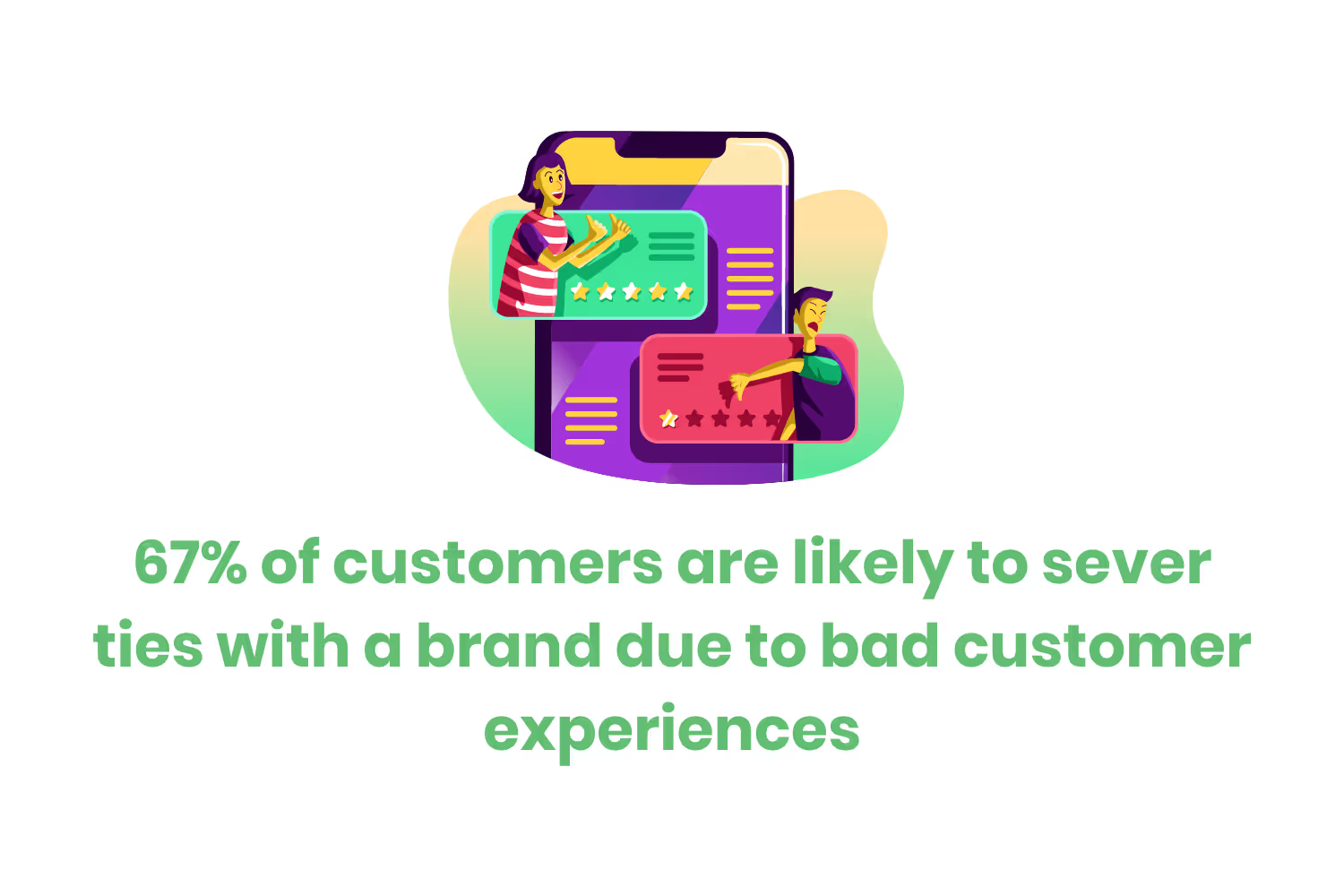
Despite all of these statistics proving that retention and experience are closely related, 20% of businesses say they don’t know where and why patient leakage happens at their practice. 47% say they have a moderate understanding of the issue. Only 1/3 say they manage patient leakage “extremely” well.6
The average healthcare entity has a growth rate of 45%, but a churn rate of 48%.7 This means that healthcare providers lose patients faster than they welcome new ones.
Needless to say, there’s room for improvement. The majority of businesses don’t have a good understanding of how to improve patient retention and reduce churn. Not only is poor patient retention costly, but improving patient retention can also help improve your practice’s revenue and profitability.
Hopefully, the patient retention statistics above give you a glimpse into the severity of patient movement from doctor to doctor. For a better understanding, below are some more patient retention statistics detailing differences in generations, the benefits of patient retention, and the cost of having patients leave.
Generational Patient Retention Statistics
As I mentioned before, about 67% of customers are likely to sever ties with a brand due to bad customer experiences.5 Naturally, customers of varying demographics have different preferences. This includes age and generational trends of customer satisfaction.
Generational dissatisfaction with healthcare providers is a real thing. Millennials, Generation X, and Baby Boomers are all likely to switch providers if they feel dissatisfied with practice logistics.
These include…
- Wait times
- Office/staff interactions
- Convenience
- Communication
- The ease of scheduling appointments
For example, 43% of Millennials are likely to switch practices in the next few years. The same is true for 44% of Generation X and 20% of Baby Boomers in the next three years.8

First, let’s discuss Millennials. When it comes to the dermatology side of healthcare, an astounding 56% of patients in this generation are somewhat likely to switch dermatologists in the next 2-3 years. 42% say they are somewhat likely to switch primary care physicians in the next two years, 47% are likely to switch dentists and 40% are likely to switch eye doctors.8 All in all, Millennials are the least satisfied with their current doctors across the board.
Generation X patients are moderately satisfied with their primary care providers, eye doctors, dermatologists, and dentists. 42%, 40%, 56%, and 47% of Generation X patients are likely to switch providers, respectively.8 This means that Generation X patients are more satisfied with doctors overall compared to Millennials. There is one exception: 2% more Generation X patients
About 24% of Baby Boomers switched providers in the past year. This is because less than 50% of Baby Boomers are completely satisfied with their healthcare experiences.8 Boomers want a personal connection with their doctors. Unfortunately, with automated text reminders, robot answering machines, and standardized emails, Baby Boomers have a hard time maintaining a relationship with their physicians.
Cost of Poor Patient Retention
Poor retention is costly. Globally, the average cost of a lost customer is nearly $243.5
Not only do you lose your revenue and profitability, but you can also lose credibility in the eyes of your community. If someone leaves your organization because of a poor experience, they might leave a complaint online or tell their friends about their experience.
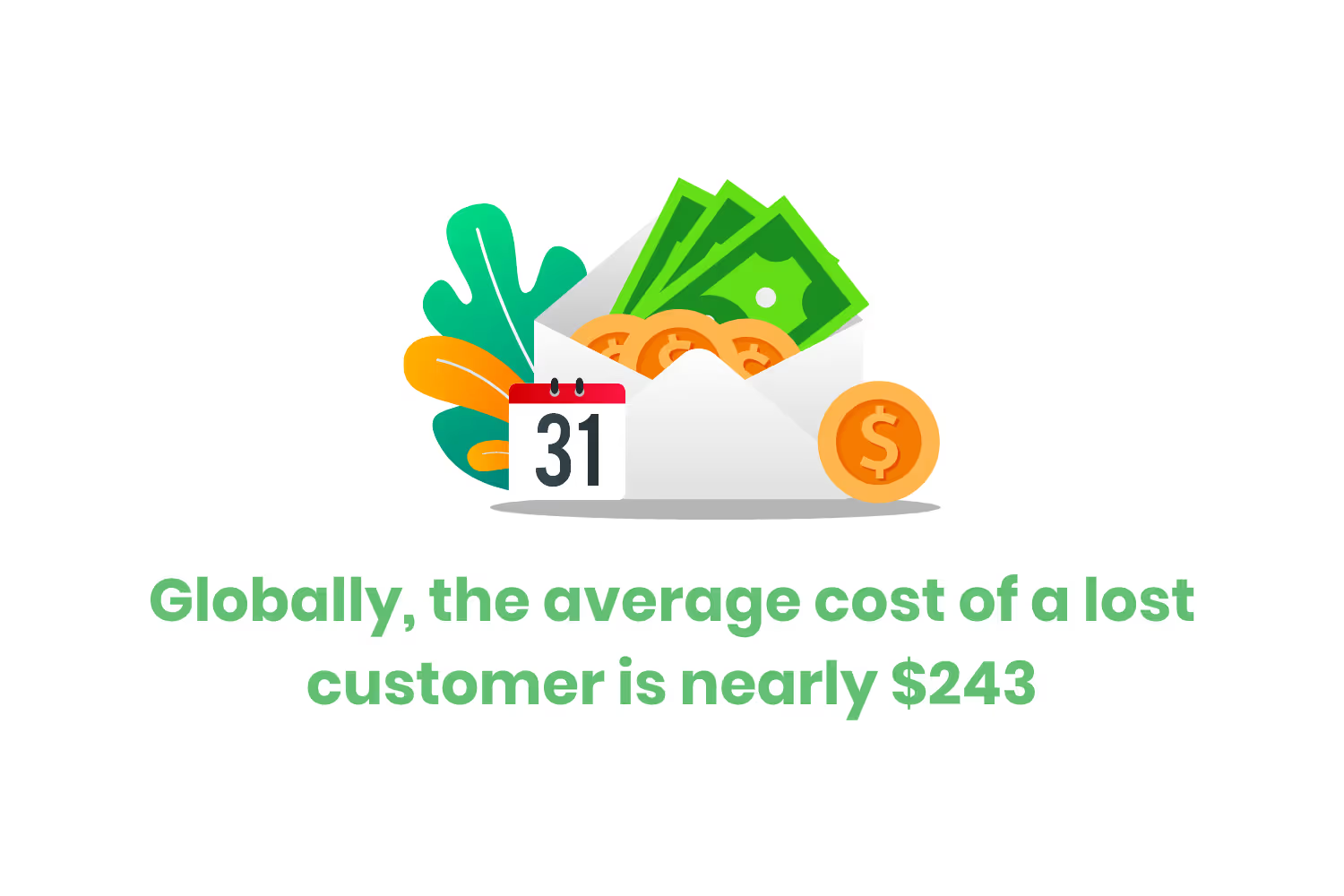
81% of patients feel unsatisfied with the service they received from a healthcare provider. 65% of consumers reportedly cut ties with a brand due to a poor customer service experience.9
These people are likely to leave a bad review online. Since it only takes 1 to 6 online reviews for a potential patient to form an opinion about your practice, bad reviews can negatively affect your future bottom line.9 You must manage and handle patient complaints and grievances.
In more concrete terms, 43% of healthcare organizations report that they lose more than 10% of revenue to poor patient retention. Another 19% say that poor patient retention costs them 20% of revenue.6 This means that these healthcare organizations found a direct correlation between poor patient experience, poor retention rate, and profits.

However, not everyone knows that there’s a direct correlation between patient retention and the practice’s bottom line. To illustrate this, 23% of healthcare entities reported that they don’t know the extent of the financial repercussions of losing patients.6
Patient Retention vs Patient Acquisition
As I mentioned above, having patients leave your practice is expensive. But so is patient acquisition! It costs a healthcare entity an average of $286 (per patient) to obtain a new patient.9
Patient retention is not the same thing as patient acquisition. “Retention” is when you keep someone as your customer. It’s basically holding existing customers secure. “Acquisition” is when you locate a prospective patient and bring them to your practice as your own patient.
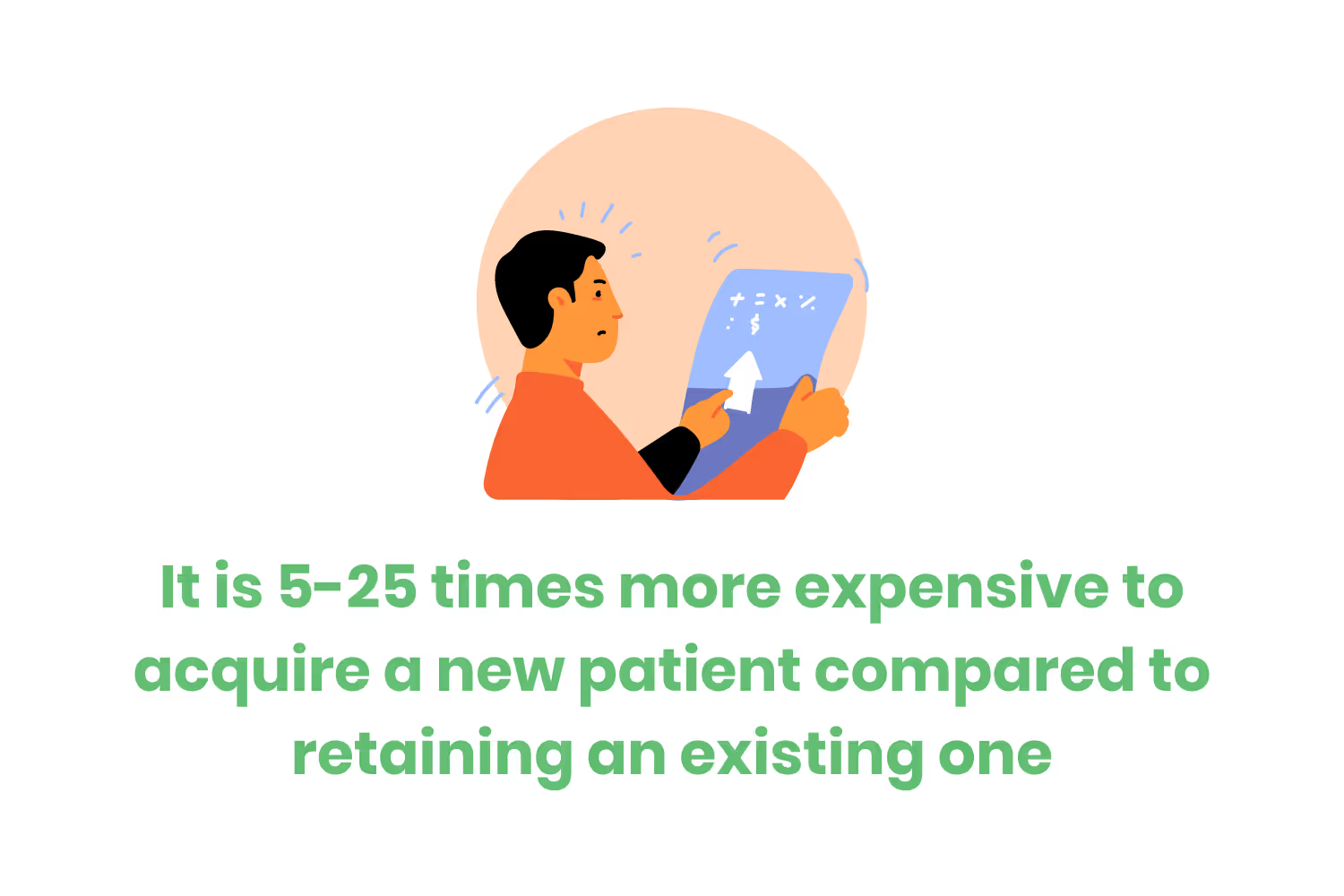
The main difference between the two becomes clear when you analyze the difference in cost. It is 5-25 times more expensive to acquire a new patient compared to retaining an existing one.10
This isn’t a healthcare anomaly. In the general world of business, it is much more cost effective to keep your current customers loyal than it is to convert new customers.
The issue is that only 16% of businesses put retention as a priority.3 The rest of them either focus on gaining new customers or don’t do anything. They simply believe that patients come and go.
Value of Patient Retention
The average lifetime value of a patient is between $12,000 and $15,000.3
With that much money coming from servicing a single person for roughly an hour of your practice’s time once or twice a year, you want to do everything in your power to keep that patient coming back to your practice.
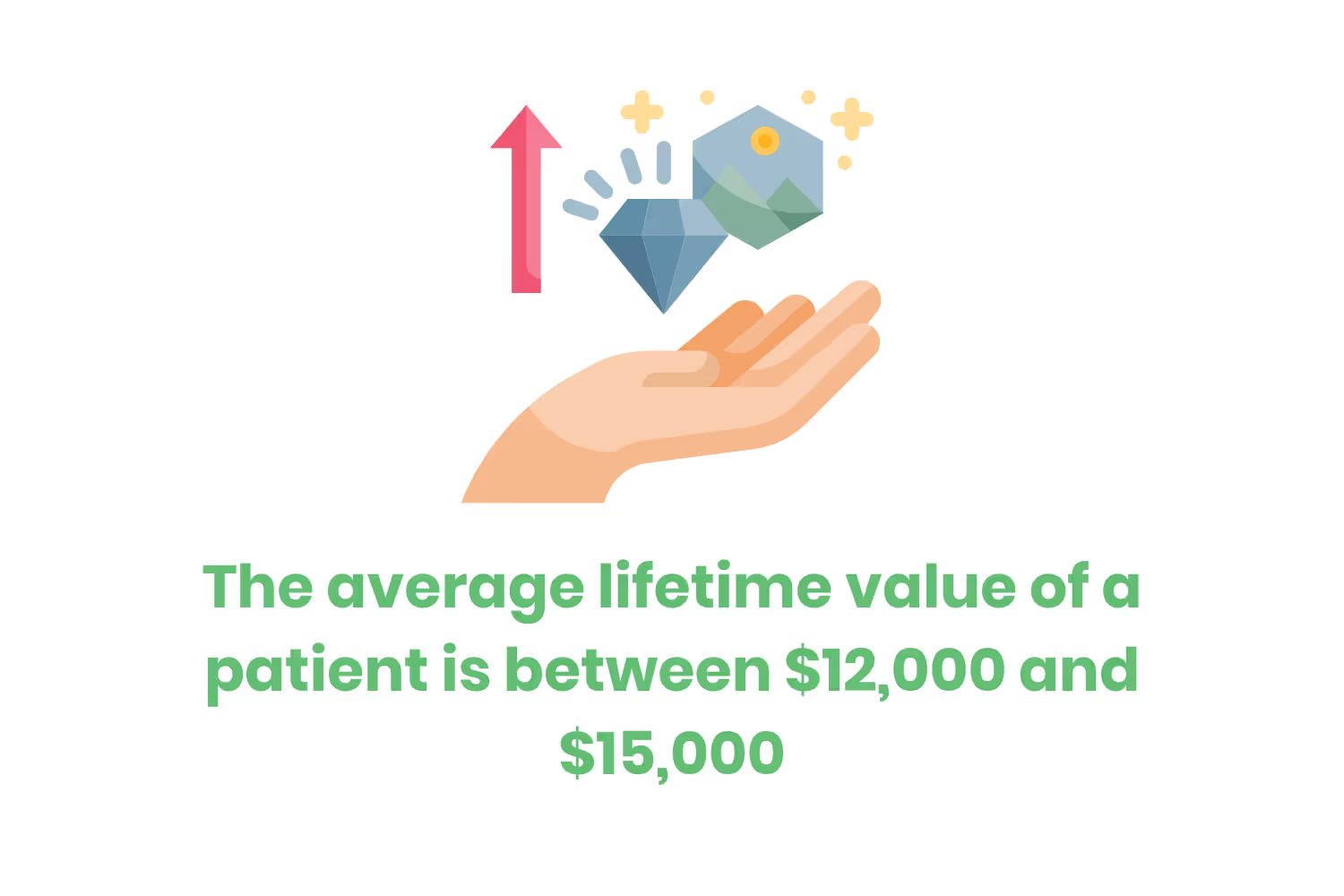
You certainly don’t want a patient to take their business elsewhere. Otherwise, your competition is profiting from your error. In fact, 44% of US consumers switch to the brand’s competitor after a poor customer service experience.11 This means that not only will you lose revenue, but your competition will benefit from your error.
If this doesn’t convince you to keep your patients happy, this statistic illustrates the value of patient retention: a business can increase profits by 25-95% by increasing customer retention by 5%.10
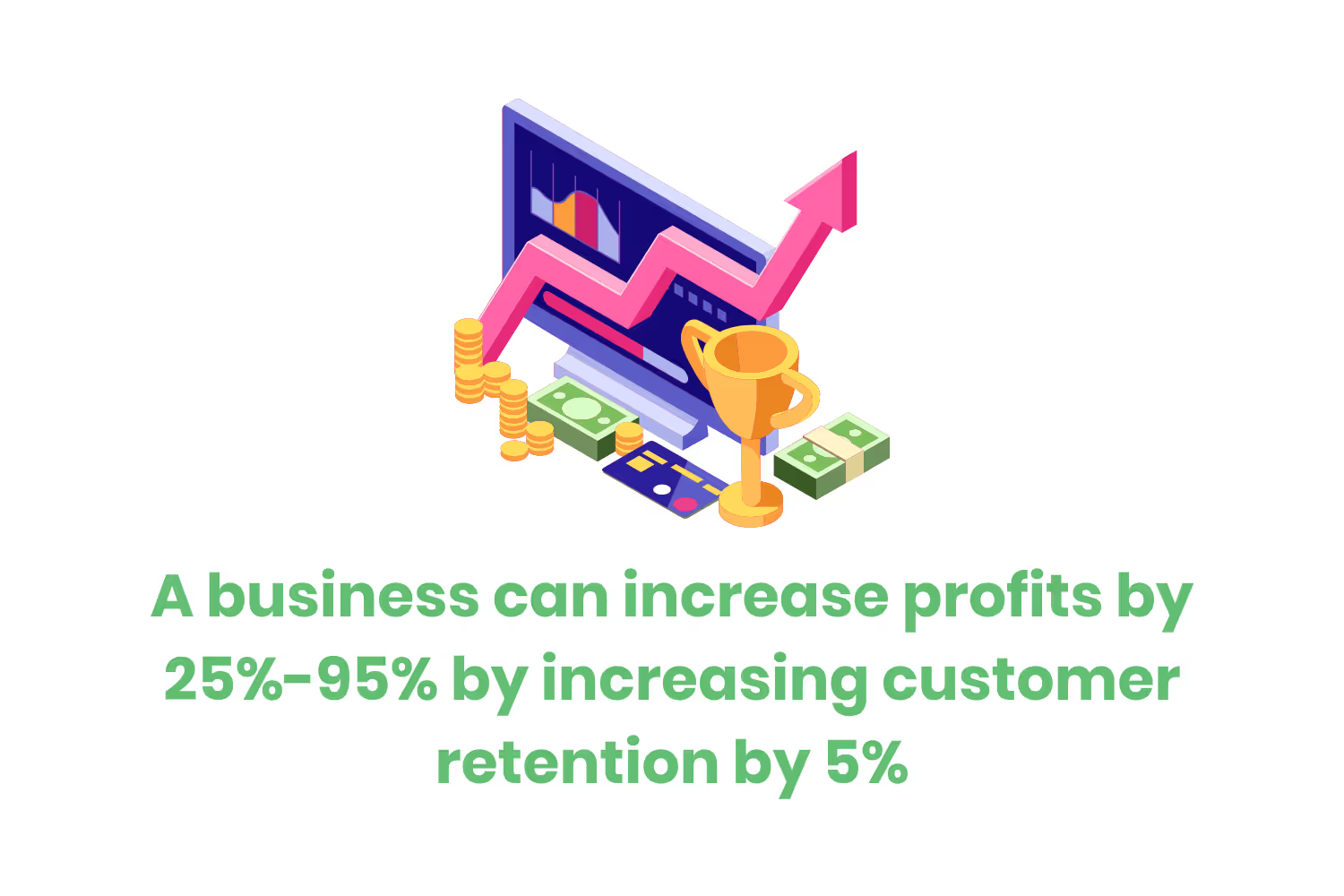
In the short term, there’s a 4% improvement in patient lifetime value for every 1% increase in retention.4 This means that if your retention rate is 36% and a patient lifetime value is $15,000, then increasing your retention rate to 37% increases the lifetime value by $600.
Additionally, there’s a 2% increase in value for every 1% change in annual retention over 5 years.4 So, profits in the long term benefit from improving your patent retention.
Patient Retention via Referrals
There’s a direct connection between patient referrals and patient retention. There’s also a direct connection between patient referrals and patient acquisition. Roughly 1/3 of patients don’t follow-up with a referral for a healthcare specialist.12 This means that 1/3 of new potential revenue doesn’t make it through your door.
Plus, it’s cheaper than straight acquisition!
However, even when patients do contact the referred doctor, 40% of patients don’t make a follow up appointment.12 This could happen because the patient doesn't believe they need a second appointment for specialized treatment. Or, it could be that they didn’t like their experience at your practice. If the latter is true, then you lose free revenue.
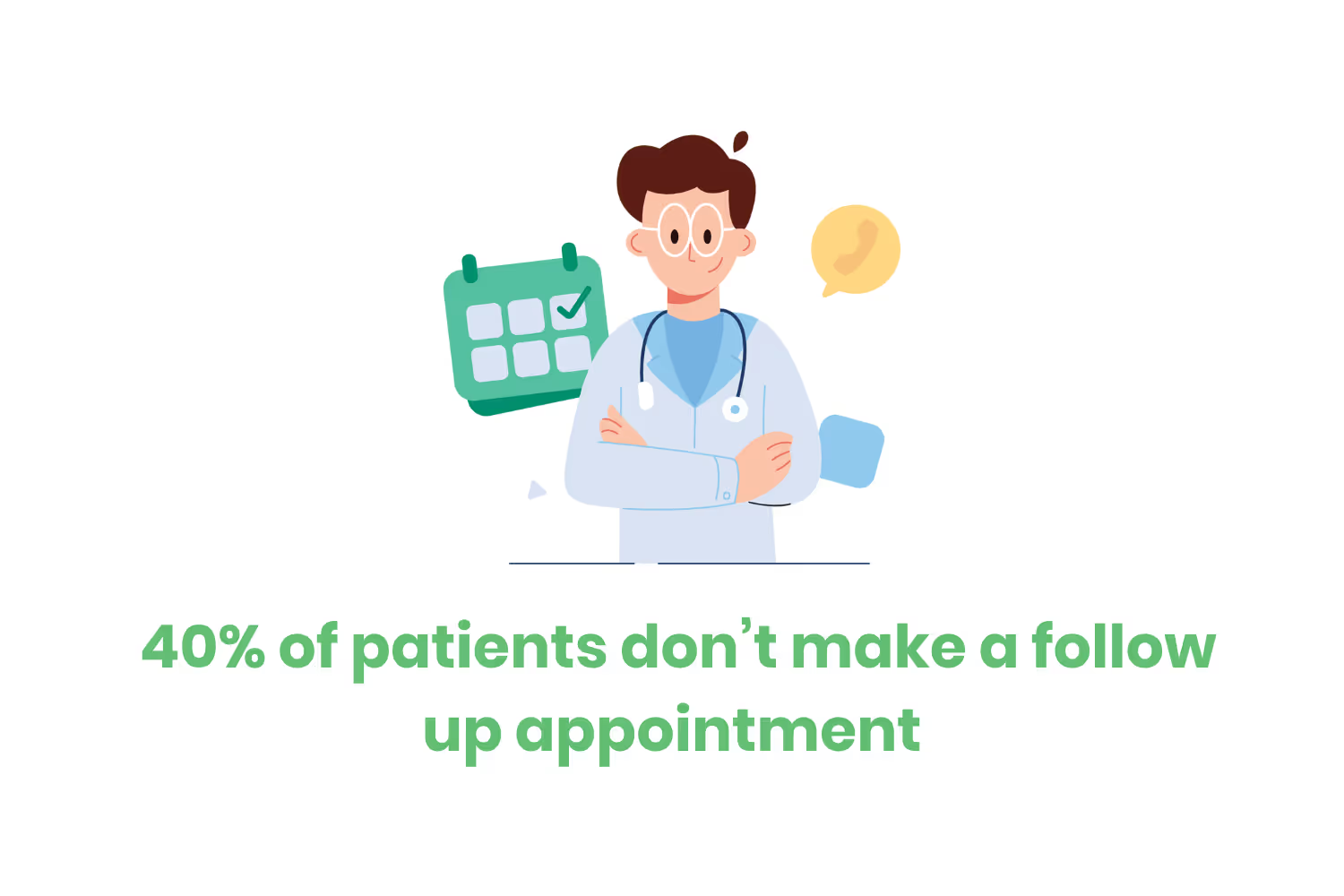
The best way to handle referrals is to manage the referral process. In this way, you can keep track of potential revenue and see how many patients follow through, follow up, and become consistent patients.
The majority of businesses agree with this need to manage the process. 87% of healthcare leaders say referral management is becoming a high priority to help curb patient leakage. Within this 87%, 12% said it’s moderately important. The remaining 13% said their employer doesn’t have a plan to monitor and report patient leakage.6
Conclusion
The best way to deal with poor patient retention is to improve every customer-facing business operation.
This can include…
- Time waiting to see the doctor
- Ease of accessing test results
- Process of scheduling an appointment
Each part of the patient’s experience has the potential to make them seek help elsewhere. As you can see from the patient retention statistics above, failing to keep your customers will cost the practice in more than one way.
If your patients leave their appointment happy and with a positive experience, then they are more likely to…
- Return for another appointment
- Leave positive reviews online
- Refer your practice to their family and friends
- Pay their bills on time
To learn more about patient satisfaction and increasing your practice’s revenue, click here.
Sources
1 (Forbes)
2 (ADA Marketplace)
3 (Provider Tech)
7 (IntakeQ)
8 (SolutionReach)
9 (Invoca)
11 (The Doctor's Answer)
12 (Becker's Healthcare)
Emphasize your product's unique features or benefits to differentiate it from competitors
In nec dictum adipiscing pharetra enim etiam scelerisque dolor purus ipsum egestas cursus vulputate arcu egestas ut eu sed mollis consectetur mattis pharetra curabitur et maecenas in mattis fames consectetur ipsum quis risus mauris aliquam ornare nisl purus at ipsum nulla accumsan consectetur vestibulum suspendisse aliquam condimentum scelerisque lacinia pellentesque vestibulum condimentum turpis ligula pharetra dictum sapien facilisis sapien at sagittis et cursus congue.
- Pharetra curabitur et maecenas in mattis fames consectetur ipsum quis risus.
- Justo urna nisi auctor consequat consectetur dolor lectus blandit.
- Eget egestas volutpat lacinia vestibulum vitae mattis hendrerit.
- Ornare elit odio tellus orci bibendum dictum id sem congue enim amet diam.
Incorporate statistics or specific numbers to highlight the effectiveness or popularity of your offering
Convallis pellentesque ullamcorper sapien sed tristique fermentum proin amet quam tincidunt feugiat vitae neque quisque odio ut pellentesque ac mauris eget lectus. Pretium arcu turpis lacus sapien sit at eu sapien duis magna nunc nibh nam non ut nibh ultrices ultrices elementum egestas enim nisl sed cursus pellentesque sit dignissim enim euismod sit et convallis sed pelis viverra quam at nisl sit pharetra enim nisl nec vestibulum posuere in volutpat sed blandit neque risus.

Use time-sensitive language to encourage immediate action, such as "Limited Time Offer
Feugiat vitae neque quisque odio ut pellentesque ac mauris eget lectus. Pretium arcu turpis lacus sapien sit at eu sapien duis magna nunc nibh nam non ut nibh ultrices ultrices elementum egestas enim nisl sed cursus pellentesque sit dignissim enim euismod sit et convallis sed pelis viverra quam at nisl sit pharetra enim nisl nec vestibulum posuere in volutpat sed blandit neque risus.
- Pharetra curabitur et maecenas in mattis fames consectetur ipsum quis risus.
- Justo urna nisi auctor consequat consectetur dolor lectus blandit.
- Eget egestas volutpat lacinia vestibulum vitae mattis hendrerit.
- Ornare elit odio tellus orci bibendum dictum id sem congue enim amet diam.
Address customer pain points directly by showing how your product solves their problems
Feugiat vitae neque quisque odio ut pellentesque ac mauris eget lectus. Pretium arcu turpis lacus sapien sit at eu sapien duis magna nunc nibh nam non ut nibh ultrices ultrices elementum egestas enim nisl sed cursus pellentesque sit dignissim enim euismod sit et convallis sed pelis viverra quam at nisl sit pharetra enim nisl nec vestibulum posuere in volutpat sed blandit neque risus.
Vel etiam vel amet aenean eget in habitasse nunc duis tellus sem turpis risus aliquam ac volutpat tellus eu faucibus ullamcorper.
Tailor titles to your ideal customer segment using phrases like "Designed for Busy Professionals
Sed pretium id nibh id sit felis vitae volutpat volutpat adipiscing at sodales neque lectus mi phasellus commodo at elit suspendisse ornare faucibus lectus purus viverra in nec aliquet commodo et sed sed nisi tempor mi pellentesque arcu viverra pretium duis enim vulputate dignissim etiam ultrices vitae neque urna proin nibh diam turpis augue lacus.


.avif)

